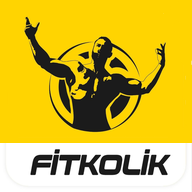For athletes and fitness enthusiasts, exercise is a pillar of health. Yet, for a significant portion, their dedication to training is met with an unwelcome side effect: heartburn. This burning sensation, caused by acid reflux, is not merely a post-meal annoyance; when triggered by physical activity, it can disrupt training, impair performance, and potentially mask more serious issues. Understanding the unique relationship between intense exercise and Gastroesophageal Reflux Disease (GERD) is crucial for any serious competitor.
The Physiological Tug-of-War
Heartburn occurs when the Lower Esophageal Sphincter (LES)—the muscular ring separating the esophagus from the stomach—relaxes or weakens, allowing stomach acid to flow backward. For athletes, intense physical activity creates a perfect storm for this to happen through several mechanisms:
-
Increased Intra-Abdominal Pressure: High-impact activities like running, jumping, and strenuous resistance training (especially exercises involving torso compression like heavy squats or crunches) dramatically increase pressure within the abdomen. This physical squeezing pushes the stomach contents, and acid, up against the LES.
-
Reduced Gastrointestinal Blood Flow: During maximal effort, the body prioritizes blood flow to the working muscles, shunting it away from the digestive tract. This decrease in blood flow to the gut, known as splanchnic hypoperfusion, can slow down digestion, allowing food and acid to linger in the stomach longer and increasing the chance of reflux.
-
Body Position and Jostling: Activities that involve repeated jarring (like sprinting) or prolonged bending/lying flat (like cycling or certain yoga poses) can physically jostle stomach contents or force acid toward the esophagus.
-
Dehydration and Sports Drinks: Poor hydration can thicken the stomach's contents and slow gastric emptying, while many common sports drinks are high in acidic compounds (like citric acid) that may further irritate the esophagus and trigger symptoms.
Strategy for the Strenuous Session
While the long-term benefits of exercise—like maintaining a healthy weight, which generally reduces the risk of GERD—are undeniable, athletes prone to reflux must adopt targeted strategies to mitigate symptoms during and immediately after a workout:
-
Strategic Meal Timing: The most critical adjustment is delaying high-intensity exercise for 2 to 3 hours after a full meal. This allows the stomach adequate time to empty. Pre-workout fueling should focus on small, low-fat, low-fiber carbohydrate snacks (like a banana or a small amount of oatmeal) which digest quickly.
-
Hydrate Smartly: Drink water consistently. Avoid gulping large amounts of water or highly acidic/carbonated beverages during or immediately before the workout.
-
Loosen Up the Gear: Tight clothing, particularly around the waist or abdomen, acts like a constricting belt, increasing pressure on the stomach. Opt for loose-fitting attire that doesn't put stress on the midsection.
-
Modify High-Risk Activities: Athletes experiencing persistent symptoms might need to temporarily substitute high-impact training (like long-distance running) with lower-impact alternatives such as swimming, elliptical training, or light cycling. Similarly, heavy compound lifts that involve extreme abdominal bracing may need to be adjusted or done with lower volume.
-
Over-the-Counter Relief: For mild, intermittent symptoms, over-the-counter antacids or H2 blockers can be taken proactively before a known trigger workout. However, persistent symptoms require a discussion with a physician to rule out a more severe condition.
In the pursuit of peak performance, acid reflux remains a common but manageable adversary. By respecting the physiological demands of their sport and implementing smart strategies, athletes can keep the burn focused on their muscles, not their esophagus.

